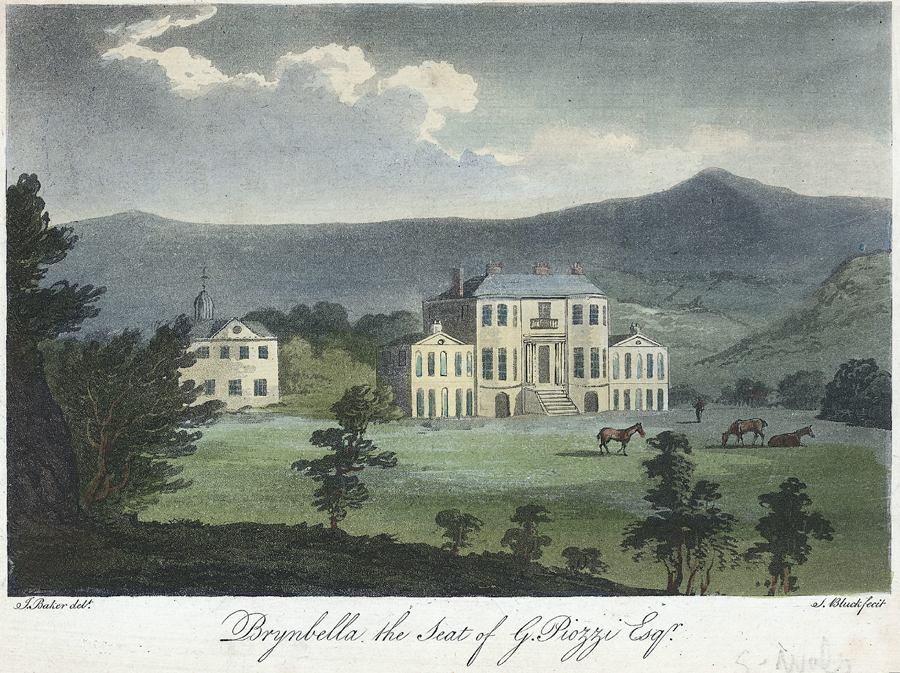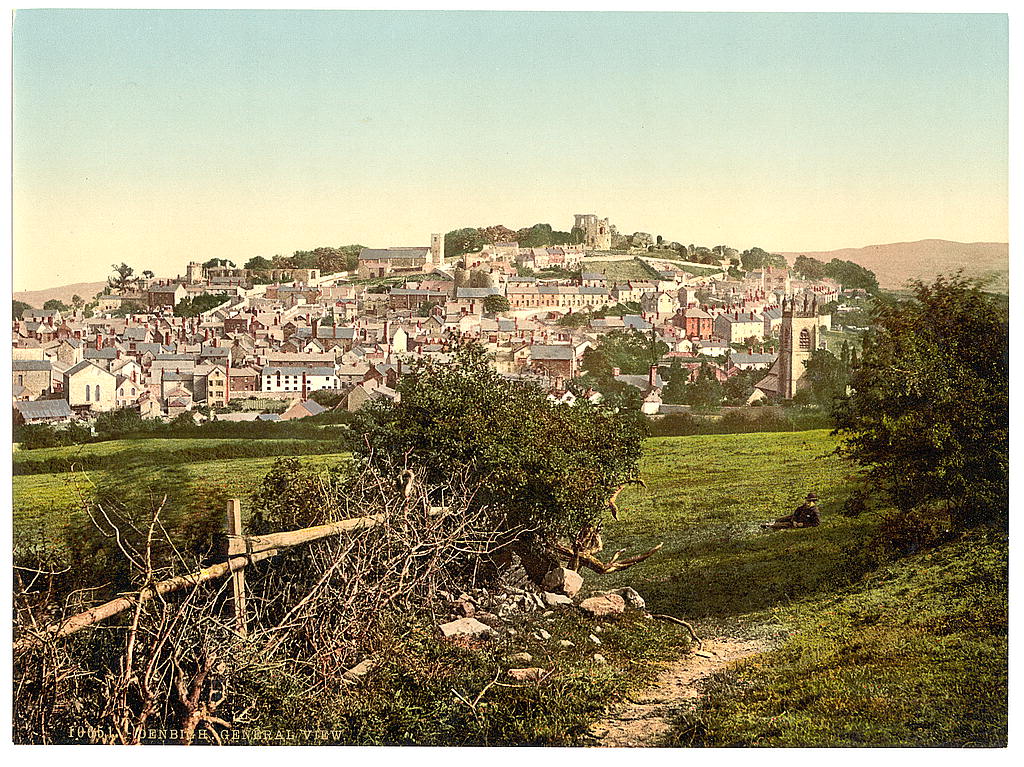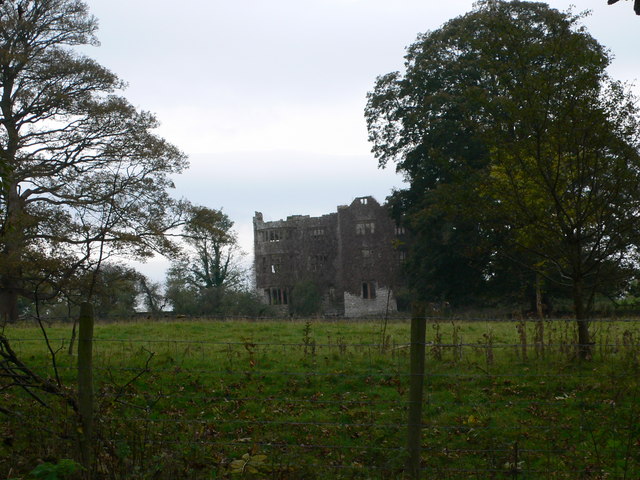|
Registered Historic Parks And Gardens In Denbighshire
Denbighshire is a county in the north of Wales. It covers an area of and in 2021 the population was approximately 96,000. The Cadw/ICOMOS Register of Parks and Gardens of Special Historic Interest in Wales was established in 2002 and given statutory status in 2022. It is administered by Cadw, the historic environment agency of the Welsh Government. It includes just under 400 sites, ranging from gardens of private houses, to cemeteries and public parks. Parks and gardens are listed at one of three grades, matching the grading system used for listed buildings. Grade I is the highest grade, for sites of exceptional interest; Grade II*, the next highest, denotes parks and gardens of more than special interest; while Grade II denotes nationally important sites of special interest. There are 27 registered parks and gardens in Denbighshire. Five are listed at grade II*, and 22 at grade II. List of parks and gardens See ... [...More Info...] [...Related Items...] OR: [Wikipedia] [Google] [Baidu] |
Wales Denbighshire Locator Map
Wales ( cy, Cymru ) is a country that is part of the United Kingdom. It is bordered by England to the east, the Irish Sea to the north and west, the Celtic Sea to the south west and the Bristol Channel to the south. It had a population in 2021 of 3,107,500 and has a total area of . Wales has over of coastline and is largely mountainous with its higher peaks in the north and central areas, including Snowdon (), its highest summit. The country lies within the north temperate zone and has a changeable, maritime climate. The capital and largest city is Cardiff. Welsh national identity emerged among the Celtic Britons after the Roman withdrawal from Britain in the 5th century, and Wales was formed as a kingdom under Gruffydd ap Llywelyn in 1055. Wales is regarded as one of the Celtic nations. The conquest of Wales by Edward I of England was completed by 1283, though Owain Glyndŵr led the Welsh Revolt against English rule in the early 15th century, and briefly re-established an i ... [...More Info...] [...Related Items...] OR: [Wikipedia] [Google] [Baidu] |
Brynbella
Brynbella is a neoclassical villa built near the village of Tremeirchion in Denbighshire, northeast Wales, by Hester Piozzi and her husband, Gabriel Piozzi. It was the seat of the Salusbury family from 1794 until 1920. The name is part Welsh and part Italian, meaning "Beautiful Hill" (''bryn'' + ''bella''). Early history In 1794, Hester Piozzi began the construction of Brynbella with her husband in order to provide the family with a new seat after the destruction of Lleweni Hall, which had reverted to the ownership of Stapleton Cotton, 1st Viscount Combermere due to primogeniture. It was built out of Portland limestone in the style of the Palladian villas which she had seen during her self-imposed exile in Italy. There, Gabriel Piozzi became accustomed to British society, although his position as a Catholic continually undermined his position amongst the local gentry. The building was designed by Clement Mead who exhibited the design at the Royal Academy in 1794. Construction ... [...More Info...] [...Related Items...] OR: [Wikipedia] [Google] [Baidu] |
Llannerch Hall
Llanerch Hall, Trefnant, Clwyd, Wales, is a country house with medieval origins. It was rebuilt twice at the beginning and at the end of the 17th century, was again rebuilt in the 19th century, and further modified in the 20th. The hall is now divided into flats, each with its own Grade II* listing. The parkland, now a golf course, conceals traces of a late 17th century Italianate terraced garden that rivalled those at Powis Castle. The gardens were entirely destroyed in the 19th century rebuilding. The house remains privately owned. History The site of Llannerch Hall has been occupied since medieval times and was formerly called Lleweni Vechan. In the Tudor period, a house on the site was described by its owner, the Welsh-language poet Gryffydd ap Ieuan, as "a high-crested, too long sided, loose-eaved, short-raftered, rambling, soot-accumulating old ornament of ancient workmanship". In the early 17th century the Llannerch estate came into the possession of Peter Mutton. Mutto ... [...More Info...] [...Related Items...] OR: [Wikipedia] [Google] [Baidu] |
Kinmel Hall
Kinmel Hall is a large country mansion within Kimnel Park near the village of St. George, close to the coastal town of Abergele, in Conwy county borough, Wales. The hall, the third building on the site, was completed in the mid 19th century for the family of a Welsh mining magnate. In 1929, the property ceased being a private residence; it has since been used as a boys' school, health spa, girls' school, wartime hospital, conference centre and hotel (on two occasions). Since 2001 Kimnel Hall has remained empty after plans by several owners to renovate the building were not undertaken. In 2015 the UK's Victorian Society put it in its top ten at-risk Victorian and Edwardian buildings. In 2021 a campaign started to save Kinmel Hall from dereliction. The hall is a Grade I listed building and its gardens and parkland are designated on the Cadw/ICOMOS Register of Parks and Gardens of Special Historic Interest in Wales. History Early hall The original Kinmel Hall was owned by t ... [...More Info...] [...Related Items...] OR: [Wikipedia] [Google] [Baidu] |
Beatrix Potter
Helen Beatrix Potter (, 28 July 186622 December 1943) was an English writer, illustrator, natural scientist, and conservationist. She is best known for her children's books featuring animals, such as ''The Tale of Peter Rabbit'', which was her first published work in 1902. Her books, including 23 Tales, have sold more than 250 million copies. Potter was also a pioneer of merchandising—in 1903, Peter Rabbit was the first fictional character to be made into a patented stuffed toy, making him the oldest licensed character. Born into an upper-middle-class household, Potter was educated by governesses and grew up isolated from other children. She had numerous pets and spent holidays in Scotland and the Lake District, developing a love of landscape, flora and fauna, all of which she closely observed and painted. Potter's study and watercolours of fungi led to her being widely respected in the field of mycology. In her thirties, Potter self-published the highly successful childre ... [...More Info...] [...Related Items...] OR: [Wikipedia] [Google] [Baidu] |
Denbigh
Denbigh (; cy, Dinbych; ) is a market town and a community in Denbighshire, Wales. Formerly, the county town, the Welsh name translates to "Little Fortress"; a reference to its historic castle. Denbigh lies near the Clwydian Hills. History Denbigh Castle, together with its town walls, was built in 1282 by order of King Edward I. The Burgess Gate, whose twin towers adorn the symbol on Denbigh's civic seal, was once the main entrance into the town. The first borough charter was granted to Denbigh in 1290, when the town was still contained within the old town walls. It was the centre of the Marcher Lordship of Denbigh. The town was involved in the revolt of Madog ap Llywelyn in 1294–1295; the castle was captured in the autumn, and on 11 November 1294 a relieving force was defeated by the Welsh rebels. The town was recaptured by Edward I in December. Denbigh was also burnt in 1400 during the revolt of Owain Glyndŵr. During the Wars of the Roses (1455-1487), the town was ... [...More Info...] [...Related Items...] OR: [Wikipedia] [Google] [Baidu] |
Gwaenynog
Gwaenynog is a small estate about to the south-west of the town of Denbigh, Wales. Its origins are mediaeval when it was built as a house for the Myddelton family. The Myddeltons claimed descent from Rhirid Flaidd, of the House of Cunedda, hereditary Kings of Gwynedd. Anglicising themselves and their name after the conquest of Wales, they thrived as prominent local landowners and politicians. Basing themselves ultimately at Chirk Castle, they served as receivers of Denbigh, governors of its castle and as members of parliament for Denbighshire and Denbigh Boroughs. Originally the principal family house, Gwaenynog descended to a cadet branch after the purchase of Chirk. This first building was a timber-framed hall-house dating to the middle of the 16th century. Extended in the 18th century, in 1774 the then owner, Colonel John Myddleton, hosted his relative Hester Thrale and her close friend, the lexicographer Samuel Johnson, a visit Myddleton commemorated by the erection of a mo ... [...More Info...] [...Related Items...] OR: [Wikipedia] [Google] [Baidu] |
Bee Bole
A bee bole is a cavity or alcove in a wall (the Scots word ''bole'' means a recess in a wall). A skep is placed in the bee bole. Before the development of modern bee hives (such as the design published by Lorenzo Langstroth in 1853), the use of bee boles was a practical way of keeping bees in some parts of Britain, although most beekeepers kept their skeps in the open covered by items suitable for the purpose, such as old pots or sacking. The bee bole helped to keep the wind and rain away from the skep and the bees living inside. Bee keeping was a very common activity in the past before sugar became plentiful and affordable as a sweetener. Demand was also a high for beeswax for candles, especially from the prereformation churches, cathedrals, and abbeys; tithes and rents were often paid in honey and/or beeswax, or even bee swarms. Distribution Bee boles and other protective structures for skeps are found across almost the whole of the British Isles, particularly in areas exposed ... [...More Info...] [...Related Items...] OR: [Wikipedia] [Google] [Baidu] |
Henllan
Henllan is a village and community in Denbighshire, Wales with a population of approximately 750 (OfNS/2004) and lies in the countryside, approximately 2.25 miles (3.5 km) north-west of the walled town of Denbigh. The name is Old Welsh, ''Hên-llan'', meaning "old church-enclosure". The population had increased to 862 at the 2011 census. The Grade I listed country house, Foxhall Newydd, lies to the southeast. The country house retreat Eriviat Hall also lies outside the village. The Llindir Inn, reputed to be haunted, dates to the 13th century. Church and bell tower The tower of Saint Sadwrn's church is unusual in that it was built separate from the main building housing the congregation. The stone tower, which is built on a rising rock, is sited at the highest point in the churchyard. It is thought this was to increase the range over which the tolling bells could be heard by parishioners. The traditional parish of Henllan covered a large area; today it forms part of the ... [...More Info...] [...Related Items...] OR: [Wikipedia] [Google] [Baidu] |
Foxhall Newydd
Foxhall Newydd is a Grade I listed country house, roughly to the southeast of Henllan, Denbighshire, north Wales. The house, planned in a symmetrical H-plan, commenced construction under John Panton of Denbigh in 1592. Though it was never finished and has now been in ruins for over 150 years, it is described by Cadw (, a Welsh verbal noun meaning "keeping/preserving") is the historic environment service of the Welsh Government and part of the Tourism and Culture group. works to protect the historic buildings and structures, the landscapes and heritage s ... as "one of the most ambitious and sophisticated projects of Elizabethan house building in Wales". It became a Grade I listed building on 24 October 1950. References Grade I listed buildings in Denbighshire Country houses in Wales {{Denbighshire-struct-stub ... [...More Info...] [...Related Items...] OR: [Wikipedia] [Google] [Baidu] |
Llanfair Dyffryn Clwyd
Llanfair Dyffryn Clwyd is a village and community in Denbighshire, Wales, situated in the Vale of Clwyd about one mile south of the town of Ruthin. By the 2001 census, it had 1048 residents and 50.6% of them could speak Welsh. The figures for the 2011 census were: population 1,053:Welsh speakers 46.9%. The age group with the highest percentage of Welsh speakers was the 15-year-olds where every one could speak it. The villages of Pentrecelyn Pentrecelyn is a rural village in Denbighshire, North East Wales just off the A525 between Ruthin Ruthin ( ; cy, Rhuthun) is a market town and community in Denbighshire, Wales, in the south of the Vale of Clwyd. It is Denbighshire's c ... and Graig Fechan are located in the community. Church of St. Mary and St. Cynfarch ‘The church of St. Mary in the Vale of Clwyd’ – in Welsh Llanfair Dyffryn Clwyd – shares its dedication with ‘Saint’ Cynfarch, apparently a Celtic chieftain from northern Britain, related to Coel Hen ... [...More Info...] [...Related Items...] OR: [Wikipedia] [Google] [Baidu] |
Llanferres
Llanferres is a village and community in the county of Denbighshire in Wales. At the 2001 Census the population of the village was recorded as 676, increasing to 827 at the 2011 census. Geography It is located 230 metres above sea level in the upper valley of the River Alyn on the A494 road between Ruthin and Mold. The village lies on the eastern slopes of the Clwydian Hills, just south of Moel Famau, and is wholly within the Clwydian Range and Dee Valley Area of Outstanding Natural Beauty. The village sits alongside the Welsh Assembly A494 Trunk Road on bus routes providing access to the nearest towns Mold and Ruthin. Offa's Dyke National Trail passes one mile to the southwest of the village. The Parish or Community Council of Llanferres area includes the village of Maeshafn and hamlets of Tafarn-y-Gelyn and Loggerheads. Notable landmarks The parish church, is dedicated to St. Berres, a 4th-century to 5th-century Welsh hermit, who according to Thomas Pennant was a d ... [...More Info...] [...Related Items...] OR: [Wikipedia] [Google] [Baidu] |




